Puspayurvedah (पुष्पायुर्वेदः)
₹166.00
| Author | Prof. P.V. Sharma |
| Publisher | Chaukhambha Viswabharati |
| Language | English & Sanskrit |
| Edition | 2015 |
| ISBN | 978-93-81301-68-5 |
| Pages | 127 |
| Cover | Paper Back |
| Size | 14 x 4 x 22 (l x w x h) |
| Weight | |
| Item Code | CVB0004 |
| Other | Dispatched in 1-3 days |
10 in stock (can be backordered)
CompareDescription
पुष्पायुर्वेदः (Puspayurvedah) This is the latest work of Prof. Sharma which dealt with flowers of various plants and their role in health and discase. The text in Sanskrit is followed by English translation by the author
The subject matter is divided into the following five chapters
1. General description of flowers. 2. Properties and actions of flowers, 3. Use of flowers in health, 4 Therapeutic uses of flowers, 5. Preparations of flowers
Thus it opens a new vista in the study of Dravyaguna (Medicinal Plants) highlighting the practical importance of a particular part which is the most beautiful and attractive one. The book would be useful for all those who love flowers and realise their affinity with life apart from the physicians and scientists who would atilise them in different conditions.
Prof. P.V. Sharma is well known for his valuable contributions in the field of Ayurveda. During the last five decades he has written on various aspects of Ayurveda-literary as well as scientific, conceptual as well-as historical Born on 1st November, 1920 in a small village near Patna in the family of traditional vaidyas be pradually acquired highest degrees in Ayurveda Sanskrit and Hindi and held highest posts in academic and administrative fields. In Bihar, he was, for many years, Principal, Govt Ayurvedic college Patna and Dy, Director of Health Services (L.M.). Finally, he was appointed as Professor of Dravyaguna, also as Head and later Director of the Post graduate Institute of Indian Medicine, also Dean of the Faculty of Indixo.
Medicine in Banaras Hindu University. He retired in 1980 Proud Sharma has been participating in Imemational conferences abroad and has bees asured with several committees on Ayurveda on naminal level. He has authored about 50 books and has about 500 published papers so his credit Flower is the most attractive part of the plant which be- witches with its beautiful harmony, colours and fragrance. It symbolises blossoming of universal consciousness and the smile of spirit hidden in Nature. This is the reason why flowers occupy an important place in individual and social life. Poets pour their emotional outburst and fine expressions on the charming apperance of flowers and that is why have honoured spring as the king of seasons (Rturāja) and friend and associate of Love-god (Kama).
The Mother was very fond of flowers so much so that often she identified herself with them. She realised their blooming as her own smile. She also discovered spiritual significance of flowers and labelled each flower with specific name based on the quality which they represented. She has also indicated, at some places, use of flowers in ailments.
In Ayurveda, flowers have distinct place and are used in health and disease from time immemorial. It is learnt that there was some text on Puspāyurveda. In introductory remarks the editor, Pt. V. P. Shastri, of the Kalyānakäraka by Ugrādityācarya (pub. Sholapur, 1940) informs that there was a text entitled ‘Puspayurveda’ which contained the use of flowers of eighteen thousand species and varieties and a manuscript of which is available in Kannada script. He also relates it to Samantabhadra, a renowned Jaina scholar, who preceded Püjyapăda (pp. 37-38). This is the only source of information on which several articles are published by different authors but I think nobody has seen the text (including myself) and exact informations on the manuscript are still lacking.
Nevertheless, the topic is interesting and it evidently shows the importance of flowers in relation to health and disease. With this view, I took up this work and collected relevant material from the Ayurvedic texts giving the shape of a book now in your hands.
The present text is divided into five chapters. The first chapter deals with description of the parts of flower and other general informations thereon. The second chapter contains properties and actions of different flowers as described in nighantus and other texts. The use of flowers in health and daily life has been given in the third chapter. The fourth chapter contians therapeutic uses of flowers in different disease-conditions. On overall observation it would be evident that flowers, as they are delicate and soothing, are useful mostly in aggravation of pitta, intrinsic haemorrhage, eye diseases and poisoning. The fifth and the last chapter describes the various pharmaceutical forms in which flowers are used.
The text is translated into English giving the Latin names of the flowering plants in the relevant chapter. I have tried my best to represent and reconstruct the Puspāyurveda which may serve as the ground work for the scholars working in this field. I bow to the Mother with all numble offerings by whose divine inspiration this work was made possible. I extend my hearty thanks and best wishes to Dr. Pravina Chandra Pathak of Barauni for supplying the photograph. I am also thankful to the publishers for bringing out this book in a nice form.


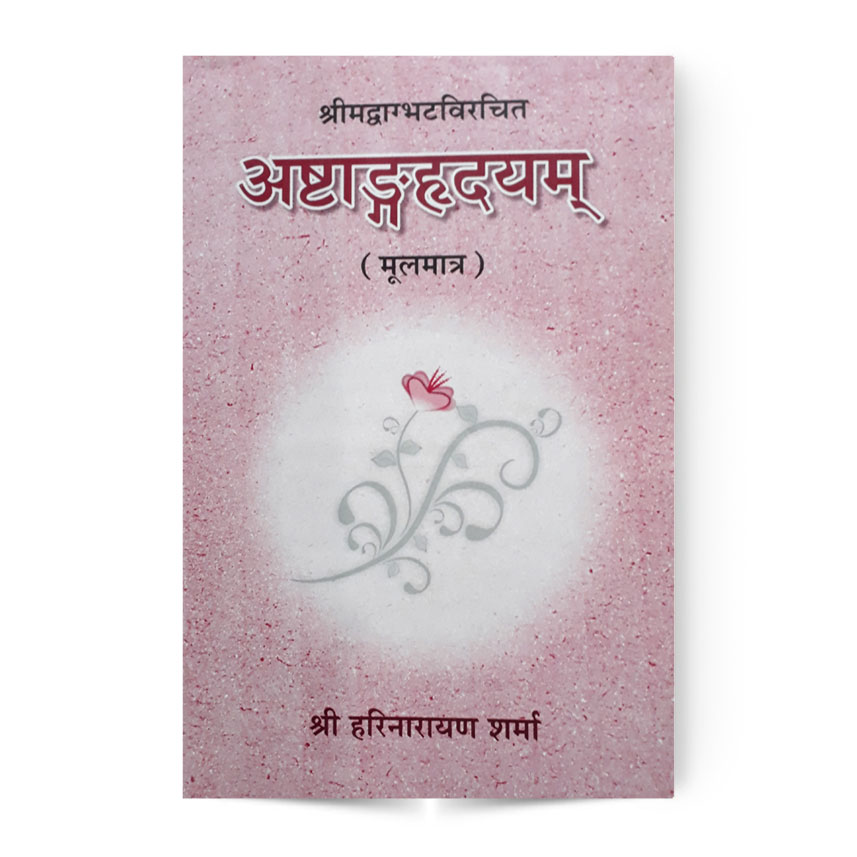




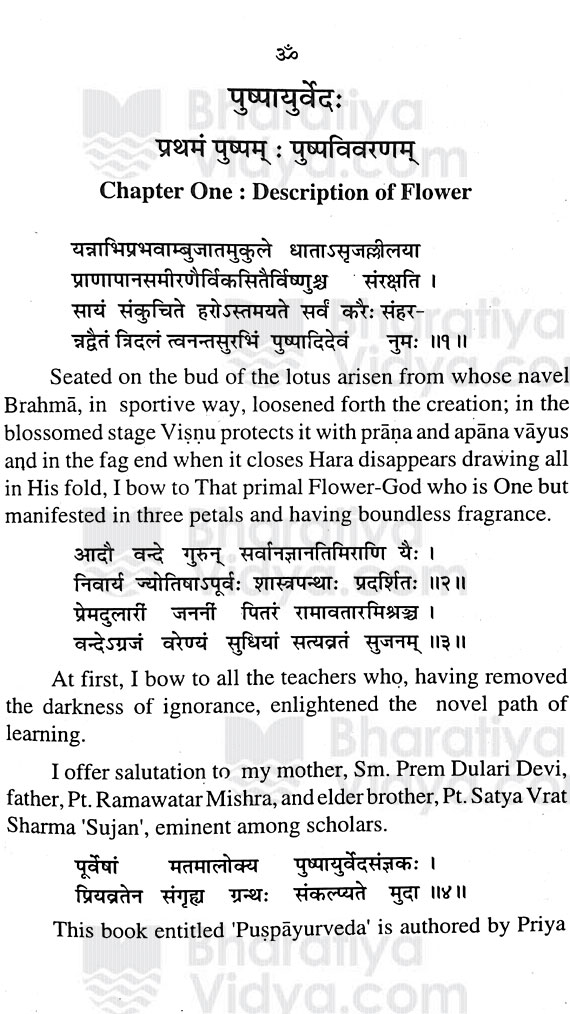


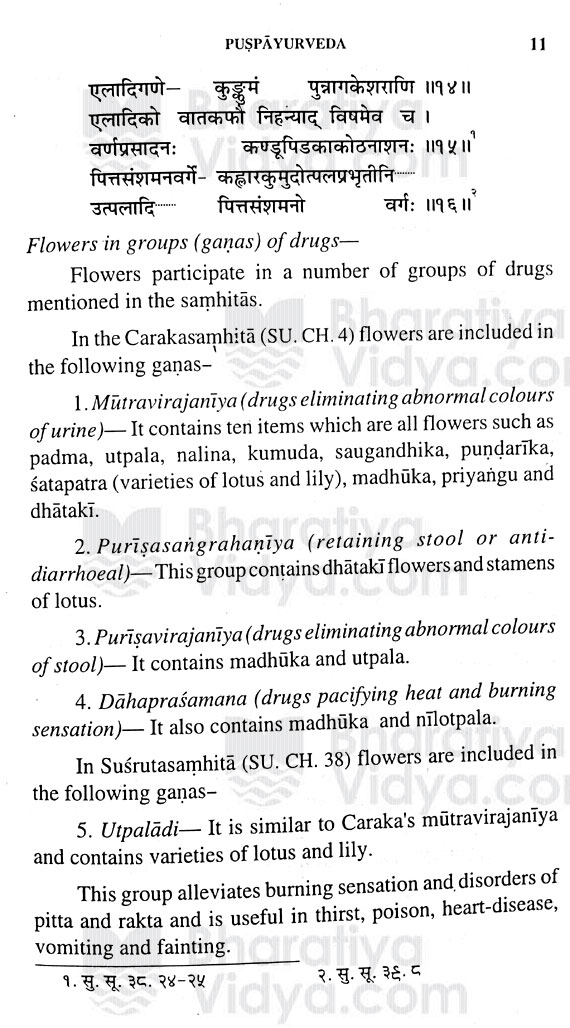

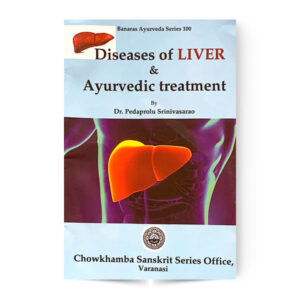
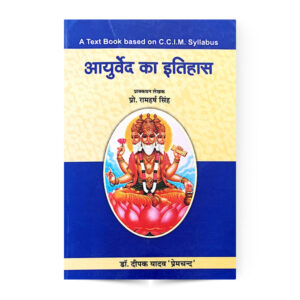

Reviews
There are no reviews yet.